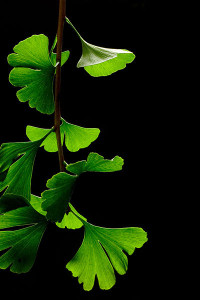On the award-winning CD Ask the Planet, the song Wise Like You asks three species to share their secrets. Today we focus on Ginkgo biloba, an ancient species of tree native to China. Many people have heard of Ginkgo biloba because of its reputation as an herbal remedy for memory loss. Amy Martin’s song lyrics go,
“Oh ginkgo / I think you know a secret / One of your trees lives for one hundred human generations / While our nations fall and rise you have survived / If we sit at your knee will you tell us a story or two?”
How can a tree live for “100 human generations”? The ginkgo is amazingly well-adapted to natural disturbances like disease, insects, and soil erosion such as occurs along streams and on steep hillsides. Surprisingly, it shouldn’t be so well adapted to these erosive sites. According to research*, gingkos exhibit slow growth rate, late reproductive maturity, extended reproductive cycle, large and complex seeds, and large and slowly developing embryos. One strategy that does improve their survival is being able to regrow if something happens to the main part of the tree. The gingko has buds embedded near the base of the trunk that can sprout if damage occurs to the tree. The gingko can also produce aerial roots from its branches which grow downward and sprout when they reach the soil surface.
Gingkos have also survived a disturbance that is not-so-natural: nuclear radiation. In 1945, the United States dropped an atomic bomb on Hiroshima, Japan. Few living things lived within a mile of the epicenter, but six gingko trees did, and they are still alive 68 years later.** These gingkos are seen as a symbol of hope. And maybe that can tell us some valuable stories.
___________
* Royer, Dana L.; Hickey, Leo J.; Wing, Scott L. (2003). “Ecological conservatism in the ‘living fossil’ Ginkgo“. Paleobiology 29 (1): 84–104
** On this website you will find photos of the trees that survived the atomic bomb and a video in French about them.

